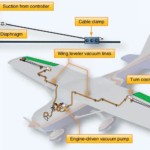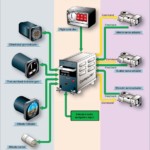An autopilot is a flight control system that allows a pilot to fly an airplane without continuous hands-on control of the airplane. It allows the pilot to focus on higher-order tasks such as navigating, communicating with air traffic control, planning for weather contingencies and rerouting associated with any kind of emergency circumstance.
An autoflight system works by sending signals to the flight control system. The pilot inputs what type of mode they want, like a heading hold mode or an altitude hold mode. If they wanted to hold a specific heading, or direction, they could push a button and specify something like 3-6-0 for north or 1-8-0 for south. If the pilot wanted to hold a specific altitude, or the height of the plane, they could designate that as well.
More sophisticated autoflight systems can actually maintain a navigational course. Similar to a GPS device you may use when driving a car, a pilot could program a GPS to maintain a specific course and the autoflight system would take the desired turns to get from point A to point B.
You can think of an autopilot as an extra crew member. Pilots do three things when they fly the airplane: They aviate, that’s actual hands-on control, stick-and-rudder control; they navigate, which is actually planning a route of course; and they communicate. Pilots have to communicate with air traffic control, look at on-board systems to maintain the status of the mechanical components of the aircraft, and plan for weather contingencies.
The autopilot performs one of those three tasks and alleviates the pilot from actually aviating, the hands-on control.


